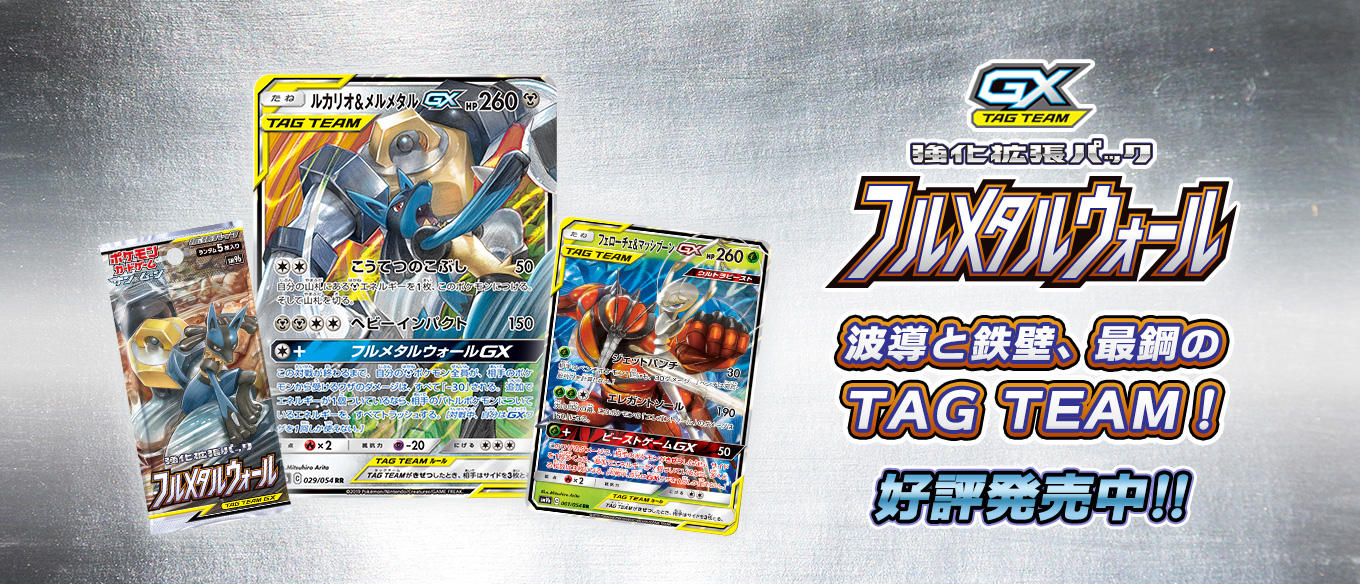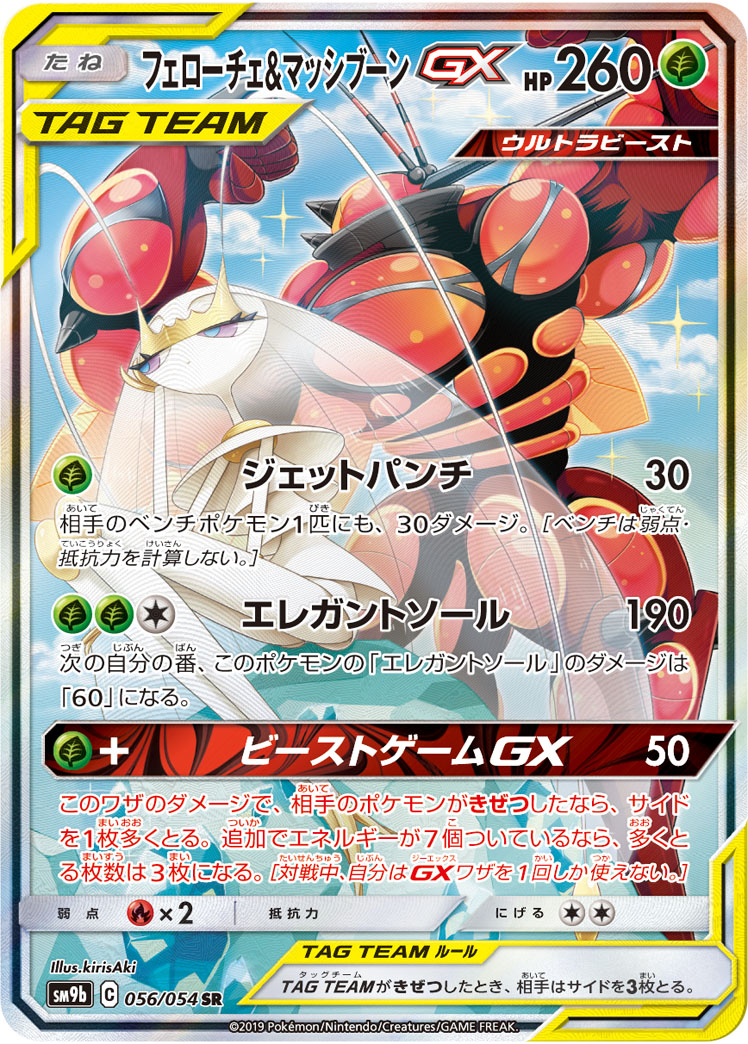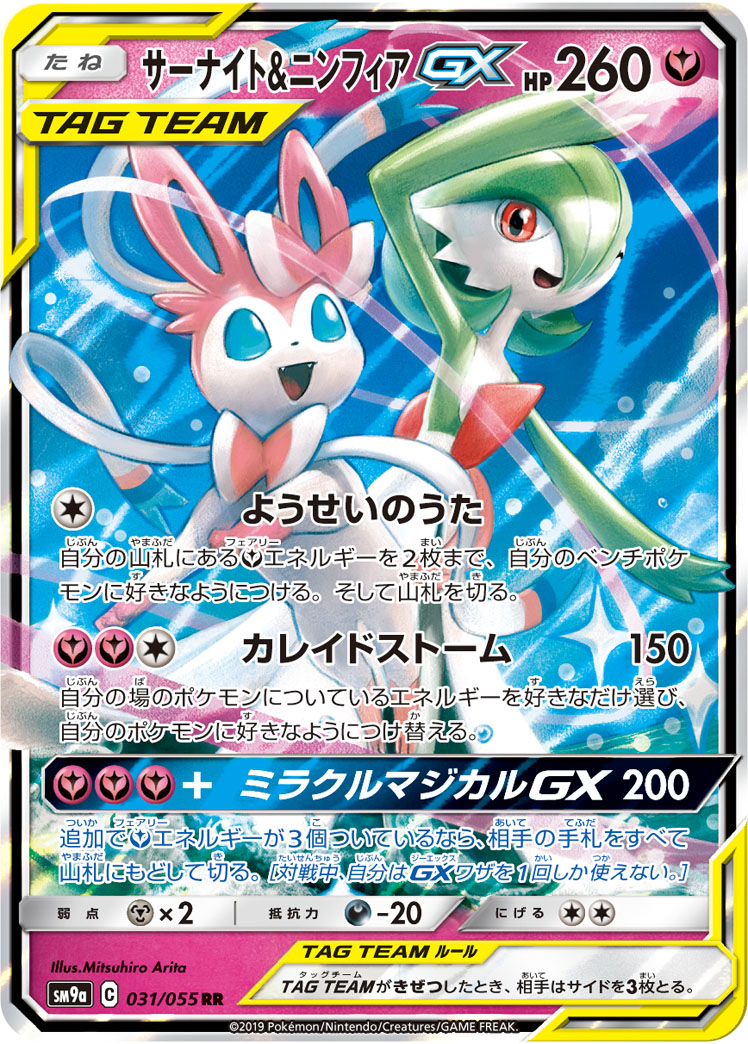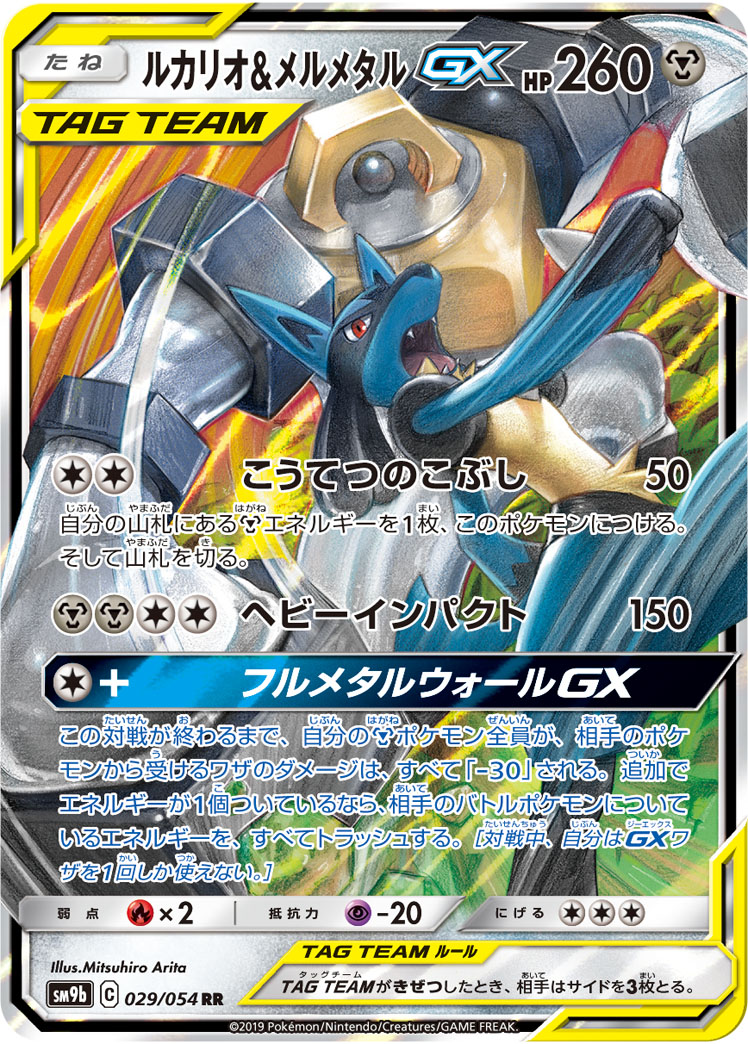An Early Look at SM9a and SM9b
Individual lists have been compiled in this spreadsheet: click here.


For the past two months, Japan
has been playing a metagame that will remain unique to the rest of the world. While most other countries get a new set to play with
every three months, Japan’s sets are a third of the size and released monthly. This
means the format played in Japan is only ever the same as it is in the rest of the world for
a maximum of one month, and never concurrently. Essentially, the release of
these first two sets create a format irrelevant to non-Japanese players.
This data will still
give us an early look into how playable some of these new cards are, but the
results need to be taken with a grain of salt. It can also help illustrate the
meta development leading up to the Chiba Champions League, of which the results
are already well known (and can be found here). All the results below are correct as far as we know,
however information is generally difficult to find so we
are unfortunately missing some data. This article won’t go into a large amount of
detail (as that will be saved for a SM1-SM10 metagame report which will be
released in a month), but hopefully the data we have compiled thus far is still
useful.
Summary
The more notable cards released
over these two sets are the Tag Team Pokemon, Gardevoir & Sylveon GX and
Buzzwole & Pheromosa GX, Dedenne GX, Green’s Search, Abandoned Powerplant, Lt. Surge’s Strategy, Electromagnetic Radar and Pokegear 3.0. It is interesting to note that
Greninja & Zoroark GX has not seen any success at all (despite the hype it has seen) compared to its set counterpart Buzzwole
& Pheromosa GX. However, it will probably be more successful
in the Expanded format, as it has access to all the cards which made Turbo Dark Tier
1 in the past.
The SM1-SM9a format had seven City Leagues held in January and the SM1-SM9b format ten held in February. City Leagues are the Japanese equivalent of Cups, however
a player may only play in one per quarter. Of these, we know 97 Top 8 archetypes out of a possible 136 and have deck lists for 44 of them. Due to the Champions
League in Chiba being so close to some of these City Leagues, many lists were
chosen not to be released.
This new card
was released in SM9b and thus isn’t in the calculations for the first portion
of the meta. The card is an absolute
unit at 260 HP, with access to the previously meta-defining Jet Punch. The deck
can utilise many of the new Trainer cards that were also released, like Green’s
Search - the general engine of the deck - and later in the game, Lt. Surge’s
Strategy. It also has access to the Supporter Ultra Forest Kartenvoy enabling
it to deal with pesky threats like Hoopa and other Safeguarders. Due to the
limitation in benching other Pokemon, the deck makes use of the newly released
Pokegear 3.0 to help with drawing through its deck.
SM1-SM9a
|
Jan 13
Tokyo
|
Jan 13
Osaka
|
Jan 20
Osaka
|
Jan 20
Chiba
|
Jan 27
Sendai
|
Jan 27
Tokyo
|
Jan 27
Aichi
|
Participants
|
94
|
||||||
1st
|
Gardevoir & Sylveon
|
Pikachu & Zekrom
|
Jirachi Zapdos W/ Buzzwole &
Jolteon
|
Vikavolt GX
|
Jirachi Zapdos W/ Buzzwole
&Jolteon
|
Lycanroc Persian
|
Jirachi Zapdos W/ Buzzwole
|
2nd
|
Pikachu
& Zekrom
|
Gardevoir
& Sylveon
|
Zoroark
Lycanroc
|
Charizard
|
Jirachi
Zapdos W/ Buzzwole & Jolteon
|
Jirachi
Zapdos W/ Buzzwole & Jolteon
|
|
Top 4
|
Ultra Necrozma
|
Gardevoir & Sylveon
|
Ultra Necrozma
|
Pikachu & Zekrom
|
Jirachi Zapdos W/ Buzzwole
& Jolteon
|
Pikachu & Zekrom
|
Ultra Necrozma
|
Top 4
|
Vikavolt
GX
|
Ultra
Necrozma
|
Passimian
Koko
|
||||
Top 8
|
Counter Spread
|
Jirachi Zapdos
|
Ultra Necrozma
|
Charizard
|
Passimian Koko
|
Jirachi Zapdos W/ SPAS Attackers
|
|
Top 8
|
Ultra
Necrozma
|
Zoroark
Lycanroc Ninetales
|
Pikachu
& Zekrom
|
||||
Top 8
|
Gengar & Mimikyu
|
Jirachi Zapdos W/ Buzzwole &
Jolteon
|
|||||
Top 8
|
Jirachi
Zapdos W/ Buzzwole & Jolteon
|
Ultra
Necrozma
|
SM1-SM9a City League Deck Distribution
|
|
Jirachi Zapdos
|
10
|
Ultra Necrozma
|
7
|
Pikachu & Zekrom
|
5
|
Gardevoir & Sylveon
|
3
|
Zoroark
|
2
|
Charizard
|
2
|
Vikavolt GX
|
2
|
Passimian Koko
|
2
|
Counter Spread
|
1
|
Lycanroc Persian
|
1
|
Gengar & Mimikyu
|
1
|
SM1-SM9b
|
Feb 3
Osaka
|
Feb 2
Hiroshima
|
Feb 3
Aichi
|
Feb 3
Tokyo
|
Feb 3
Hokkaido
|
Feb 9
Aichi
|
Feb 10
Chiba
|
Feb 10
Niigata
|
Feb 10
Nagasaki
|
Feb 24
Fukuoka
|
Participants
|
128
|
107
|
88
|
128
|
70
|
89
|
63
|
60
|
||
1st
|
Lucario & Melmetal
|
Ultra Necrozma
|
Ultra Necrozma
|
Buzzwole & Pheromosa
|
Jirachi Zapdos
|
Buzzwole & Pheromosa
|
Ultra Necrozma
|
Zoroark Lucario Ninetales
|
Vikavolt GX
|
Counter Spread
|
2nd
|
Buzzwole
& Pheromosa
|
Pikachu
& Zekrom
|
Pikachu
& Zekrom
|
Pikachu
& Zekrom
|
Zoroark
Lycanroc
|
Jirachi
Zapdos
|
Pikachu
& Zekrom
|
Jirachi
Zapdos
|
Lost
March
|
Buzzwole
& Pheromosa
|
Top 4
|
Gardevoir & Sylveon
|
Pikachu & Zekrom W/ Jirachi
|
Pikachu & Zekrom
|
Jirachi Zapdos W/ Buzzwole
|
Jirachi Zapdos W/Jolteon
|
Gaskan
|
Buzzwole & Pheromosa
|
Jirachi Zapdos
|
Rayquaza/Buzzwole &
Pheromosa/Vikavolt
|
Pikachu & Zekrom W/Jirachi
|
Top 4
|
Pikachu
& Zekrom
|
Pikachu
& Zekrom
|
Hitmonlee,
Hitmontop, Hitmonchan
|
Zoroark
Lycanroc Ninetales
|
Pikachu
& Zekrom
|
Jirachi
Zapdos
|
Ultra
Necrozma
|
Pikachu
& Zekrom
|
Gardevoir
& Sylveon
|
|
Top 8
|
Jirachi Zapdos
|
Jirachi Zapdos W/Buzzwole & Jolteon
|
Cofagrigus
|
Pikachu & Zekrom
|
Zoroark Lycanroc Weavile
|
Pikachu & Zekrom
|
Pikachu & Zekrom
|
Pikachu & Zekrom
|
Pikachu & Zekrom
|
|
Top 8
|
Jirachi
Zapdos
|
Pikachu
& Zekrom
|
Pikachu
& Zekrom
|
Lycanroc
Persian
|
Pikachu
& Zekrom
|
Buzzwole
& Pheromosa
|
||||
Top 8
|
Jirachi Zapdos
|
Pikachu & Zekrom W/ Jirachi
|
Pikachu & Zekrom
|
Ultra Necrozma
|
||||||
Top 8
|
Hitmonlee,
Hitmontop, Hitmonchan
|
Charizard
|
Zoroark
Lycanroc
|
SM1-SM9b City League Deck Distribution
| |
Pikachu & Zekrom
|
21
|
Jirachi Zapdos
|
11
|
Buzzwole & Pheromosa
|
7
|
Ultra Necrozma
|
5
|
Zoroark
|
5
|
Gardevoir & Sylveon
|
2
|
Hitmonlee, Hitmontop, Hitmonchan
|
2
|
Charizard
|
1
|
Vikavolt GX
|
1
|
Counter Spread
|
1
|
Lycanroc Persian
|
1
|
Cofagrigus
|
1
|
Lost March
|
1
|
Rayquaza/Buzzwole & Pheromosa/Vikavolt
|
1
|
Lucario & Melmetal
|
1
|
Since these formats are, as
mentioned previously, essentially irrelevant, deck list averages won’t be
created. In our last metagame breakdown we included decks from Gym Battles (which aren’t as competitive as City Leagues), to give the
averaged data more meaning. This time, only decks from the more serious City Leagues will
be used. A brief introduction, as well as key observations to some of these decks are below.
Pikachu & Zekrom Variants
Variants are still split between
using Jirachi and not. However, in general, builds have changed quite
drastically since the release of Dedenne GX in SM9a. With the added draw power, the deck can much more consistently hit a T1
Full Blitz. Electromagnetic Radar also gives the
deck more searching outs to Dedenne GX and other pieces of the combo, as well
as an additional way to discard Lightning Energy in the early game. And
although Buzzwole GX has fallen off completely, the new Reset Hole Marshadow
has given the deck an easy check if ever needed.
Since the deck can more consistently hit T1 attacks, counts of Raikou (previously very popular) have dropped to zero, and even Zapdos counts aren’t as high as they were previously. More toolbox-oriented cards like Jolteon GX and Aether Paradise have also generally been left out. Decks have started to run Field Blower however, to make sure Gardevoir & Sylveon’s Fairy Charm Electric doesn’t automatically win the matchup against them.
Since the deck can more consistently hit T1 attacks, counts of Raikou (previously very popular) have dropped to zero, and even Zapdos counts aren’t as high as they were previously. More toolbox-oriented cards like Jolteon GX and Aether Paradise have also generally been left out. Decks have started to run Field Blower however, to make sure Gardevoir & Sylveon’s Fairy Charm Electric doesn’t automatically win the matchup against them.
Jirachi Zapdos Variants
In the SM1-SM9 meta, Jirachi
Zapdos variants had decreased significantly in popularity. However, there has
been a large resurgence after the releases of SM9a and SM9b. This isn't due to to the release of any new cards however; outside of Reset
Hole Marshadow, no new cards were introduced for the archetype. My theory behind its resurgence is that Zoroark variants have dropped in popularity (and by extension Alolan Muk) and Lightning decks have dropped counts of Jolteon and Raikou, making Zapdos Jirachi more attractive to play.
Like previous formats, many
variants of Jirachi Zapdos exist: straight, with Buzzwole and/or Jolteon GX and Ultra Beast variants with Rainbow Energies. The most popular variant
appears to contain two Fighting Energy, Buzzwole, a single copy of Beast Ring and Jolteon GX.
Ultra Necrozma
Ultra Necrozma received no
new cards in either of the two new sets. However, it retains all the
characteristics it has always had. It has Giratina as a consistent attacker that can swing Prize trades, and Ultra Necrozma to deal with the high HP Tag Teams,
as well as its GX attack to deal with lower HP Pokemon in the late game. The decreased popularity of Zoroark more than likely explains why Choice Band and Beast Energy Prism have been cut from the majority of lists.
Buzzwole & Pheromosa


Whereas most
decks are generally hesitant to bench a three Prize Pokemon, this deck
generally only runs four copies of Buzzwole & Pheromosa GX and nothing else. Two knockouts will win
you the game. (Some variants also ran Jolteon GX and Lightning Energies, but
this wasn’t popularised until later, closer to the Chiba Champions League.) The
deck’s general strategy revolves around losing a Tag Team after it has spread
some damage with Jet Punch. It can then pull off powerful combos, such as Lt
Surge into Green’s Search (for two Beast Rings) and Lusamine Prism, enabling
a three to six Prize turn, as well as preventing damage for one turn.
It is worth noting that the following set in Japan, Double Blaze, will be bunched with SM9a
and SM9b to create the set Unbroken Bonds, which will contain quite a lot of Fire support,
both for the existing Blacephalon archetype and the newly released Charizard
& Reshiram GX. This in theory could change the dynamic of the format due
to their favourable type coverage over Buzzwole & Pheromosa.
Zoroark Variants
Zoroark variants have decreased
significantly in popularity since the release of the two most recent expansions.
As seen in our previous post linked here, the last major tournament of the
previous format had a Zoroark usage of an upwards of 25%, the equally most played deck. Outside
of Reset Hole Marshadow, giving the deck an answer to Buzzwole (which, again, isn’t
relevant at all in the current meta) and Dedenne GX for immediate draw,
Zoroark hasn’t received any new cards to help its place in the meta. It
generally seems to be getting power-creeped out, as decks like Pikachu &
Zekrom can set up extremely quickly, and are less worried about Counter Gain + Rogue
GX from a Lycanroc GX due to this speed.
However, Zoroark will never
actually die. It’s essentially immortal. The Japanese just haven’t optimised a
list, let alone decided on the right variant.
Released in SM9a, Gardevoir &
Sylveon instantly became successful, winning the very first City League in
Tokyo, and gaining second on the same day at a City League in Osaka, getting
donked in a very favourable matchup in the final.
The deck revolves around using
Ribombee from Lost Thunder, which gives your Fairy type Pokemon immunity from
opposing Supporters, most notably Guzma.
Fairy decks also now have access to a wide range of Charms, most significantly
giving them immunity from Electric types, Ultra Beasts and Pokemon with
Abilities. Ribombee’s ability, combined
with the Charms, a multitude of switching and healing cards, and the ability of Gardevoir to move its Energy safely onto a benched Pokemon with its second
attack, attempts to create a board state where your opponent is unable to
attack, let alone take Prizes. At some point if you can accumulate enough Energies,
its GX attack can also single handily win a game.
Charizard
Charizard remains a very powerful
one Prize attacking deck with inbuilt acceleration, although it retains the
downside of being reliant on setting up multiple Stage Two attackers. The deck
is boosted by a very favourable matchup against Buzzwole & Pheromosa, due
to its typing. It is interesting to note Alolan Ninetales GX has not been
common in this archetype.
Vikavolt GX
After almost two years of being
banished to the binder, this card has begun to see play with the new Charjabug
released, which acts like a Holon Pokemon from the EX era, enabling you to
attach the Charjabug as a double Lightning Energy. Vikavolt GX always had a
very powerful attack, but getting it, a Stage Two, out, as well as its non-GX
variant, in order to power it up was too much to ask for. Electromagnetic
Radar also gives the deck extra outs to find your Evolutions, as well as
Electropower for ramping up damage.
Spread
Spread gains or loses nothing in
the two sets of SM9a and SM9b. We have a functional reprint of Mr Mime’s Bide
Barricade in the following set, meaning this is likely going to be the last
format where spread is popular. Flying Flip is always going to be an
efficient attack, but less so in a Big Basic format, as Bench sizes can be
better minimised.
Hitmonlee, Hitmontop & Hitmonchan
This is the epitome of a combo
deck. The deck has three attackers that must attack in the right order,
otherwise the attacks fail. The combo starts with hitting the active with
Hitmonchan for 30 with Strafe, then hitting a benched Pokemon for 90 with
Hitmonlee, then hitting all Pokemon for 60 with Hitmontop. The deck aims to
ideally do that one to two times, then finish off with a Magical Swap. Since
the deck is based on Fighting types, it also attempts to take advantage of all
the Pikachu & Zekrom running rampant with type advantage, as well as the omnipresent Zoroark.
Lycanroc Persian
Alolan Persian is an incredibly
efficient attacker, able to hit up to 90 damage with an attack that requires no
energy. This means the deck can prod
your opponent’s early attackers whilst safely attaching to the bench – to Rockruff, arguably one of the most dangerous Bench sitters in the
game. Using a combination of both playable Lycanroc GXs, the deck is then
able to transition into Claw Slash and Accelerock, as well as one 1HKO with a GX
move. This deck is also hoping to take exploit its favourable type
advantage over Pikachu and Zoroark decks.
Cofagrigus
Using a thick line of Giratina
and Counter Energy, this deck aims to take advantage of favourable Prize trades
with most decks in the format. Boasting
120HP, it takes multiple Electropowers from Zapdos to knock it out,
something that isn’t sustainable in the long game. Due to Cofagrigus’ attack, it is also able to
safely use two Prize liability bench sitters like Tapu Lele GX and Dedenne GX
for setup. Since the deck generally caps at 120 damage, as well as the fact you
aim to use Distortion door upwards of four times per turn, the deck will generally try to finish the game using Tapu Lele’s Magical Swap.
Gengar & Mimikyu
Using high counts of the newly
released Startling Box and Peeping Red Card, this deck aims to hit the
opponent for large amounts of damage with Poltergeist. The deck also uses
Marshadow GX, a Malamar engine and Max Potions to make sure your opponent
doesn’t win the game too easily. The four count of Gengar & Mimikyu itself indicates that
a T1 Horror House usually enables the deck to try to snowball early from the
turn advantage.
Lost March
The deck hasn’t gained anything
notable, but still has large potential. Pikachu & Zekrom variants dropping its one Prize attacking options, as well as Ultra Necrozma dipping ever so slightly in
popularity gives the deck a little extra breathing space. It also has little
issues with the lock Gardevoir & Sylveon sets up. However, it gains a new
unfavourable matchup in Buzzwole & Pheromosa, as it has no type
coverage and is highly susceptible to Jet Punch, since it doesn't sport relevant resistance.
Rayquaza
An old deck that has attempted to
include copies of Buzzwole & Pheromosa in order to have a slightly bulkier
attacker. The deck
can make use of the very powerful GX attack by using Vikavolt's ability to load up energies.
This cool deck aims to out-resource
your opponent with incredible damage mitigation through Lucario & Melmetal’s
GX attack and Metal Frying Pans. After the deck has GXed, Duskmane Necrozma
becomes a very efficient one Prize attacker, requiring just one Energy to
attack, with an effective HP of 190. Larvitar is also included, as it has great
synergy with Duskmane, and aims to take advantage of all the Fighting weak
Pokemon prevalent in the meta. The deck also benefits by being able to play
Green’s Search.
Conclusion
Conclusion
Since the release of SM9a and
SM9b, the meta has diversified quite drastically. Previously it could have been
argued that the format consisted of only three playable decks: Zoroark, Ultra
Necrozma and Pikachu & Zekrom. With the release of the additional sets, Zapdos
Jirachi, Gardevoir & Sylveon and Buzzwole & Pheromosa have seen a large
amount of play. The power level of the new Tag Team Pokemon, as well as the new tools Pikachu & Zekrom has gained, cement their place in the meta and will ensure
they remain viable with the release of Unbroken Bonds. Green’s Search, Dedenne
GX, Pokegear 3.0 and Electromagnetic Radar are helpful additions to consistency
for many decks, whilst Abandoned Powerplant helps keep in check many ability-based
decks, like Zoroark and Pikachu & Zekrom. Lt. Surge’s Strategy also enables some interesting combos, meaning you always have to think twice about taking a Prize lead. The format has
increasingly reverted back to a Big Basics format. We will see if the trend continues upon the release of Double Blaze with a meta report of SM1-SM10, due to be released next month!



Thanks for posting these comprehensive meta-analyses of the state of play in Japan. It would be great to see some specific new lists for one City League event so we can keep up to date. And then follow up with these comprehensive assembly of lists. Thanks again!
ReplyDeleteThanks for the kind words! We're in the process of translating some tournament reports and such from recent City Leagues (I'm a bit behind schedule since university has ramped up) so stay tuned. We are also preparing another metagame breakdown :)
ReplyDeleteprudercon_yu Dan Hacker https://wakelet.com/wake/kaNoOpftP5dzSeL2nKMev
ReplyDeletebreathracmofan